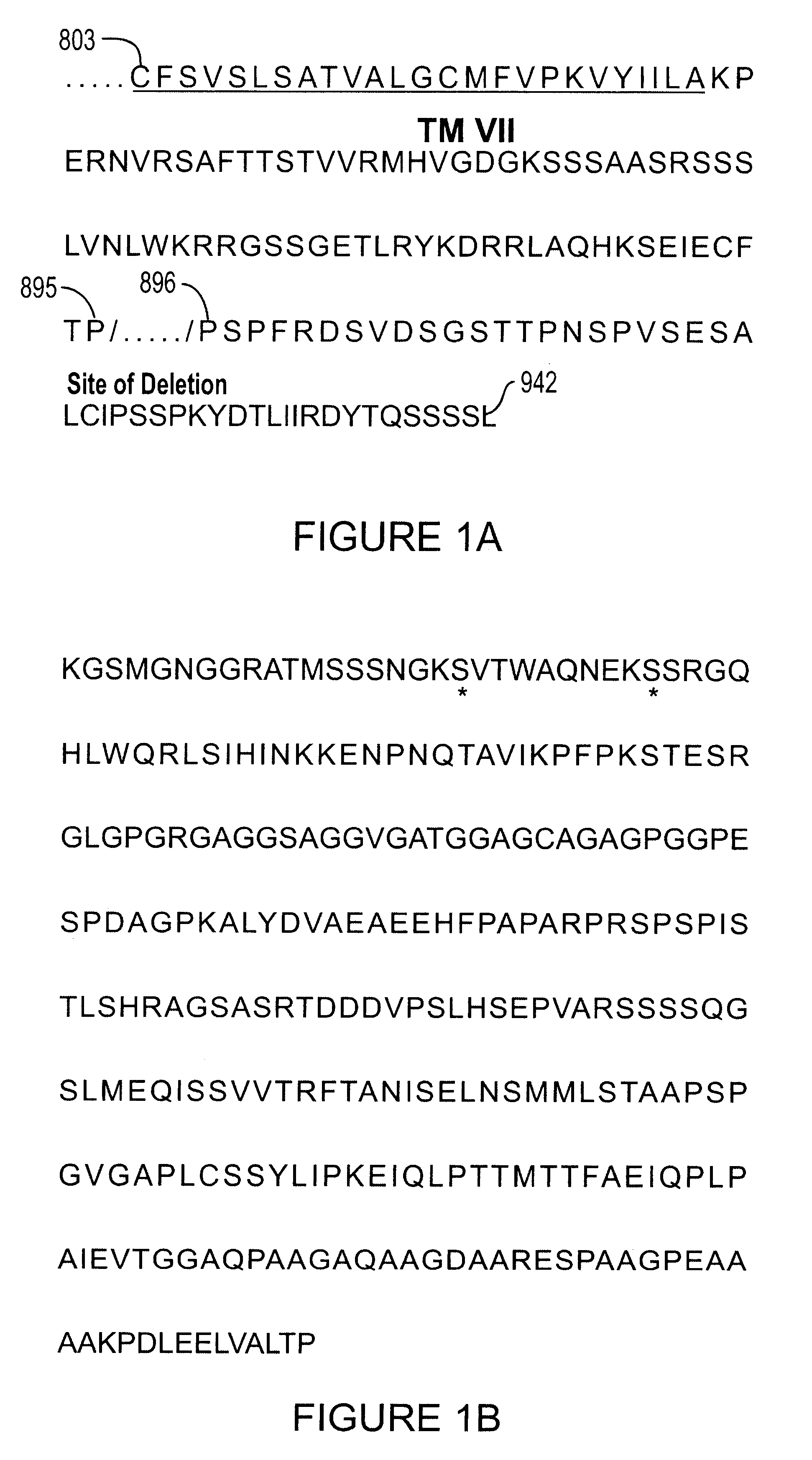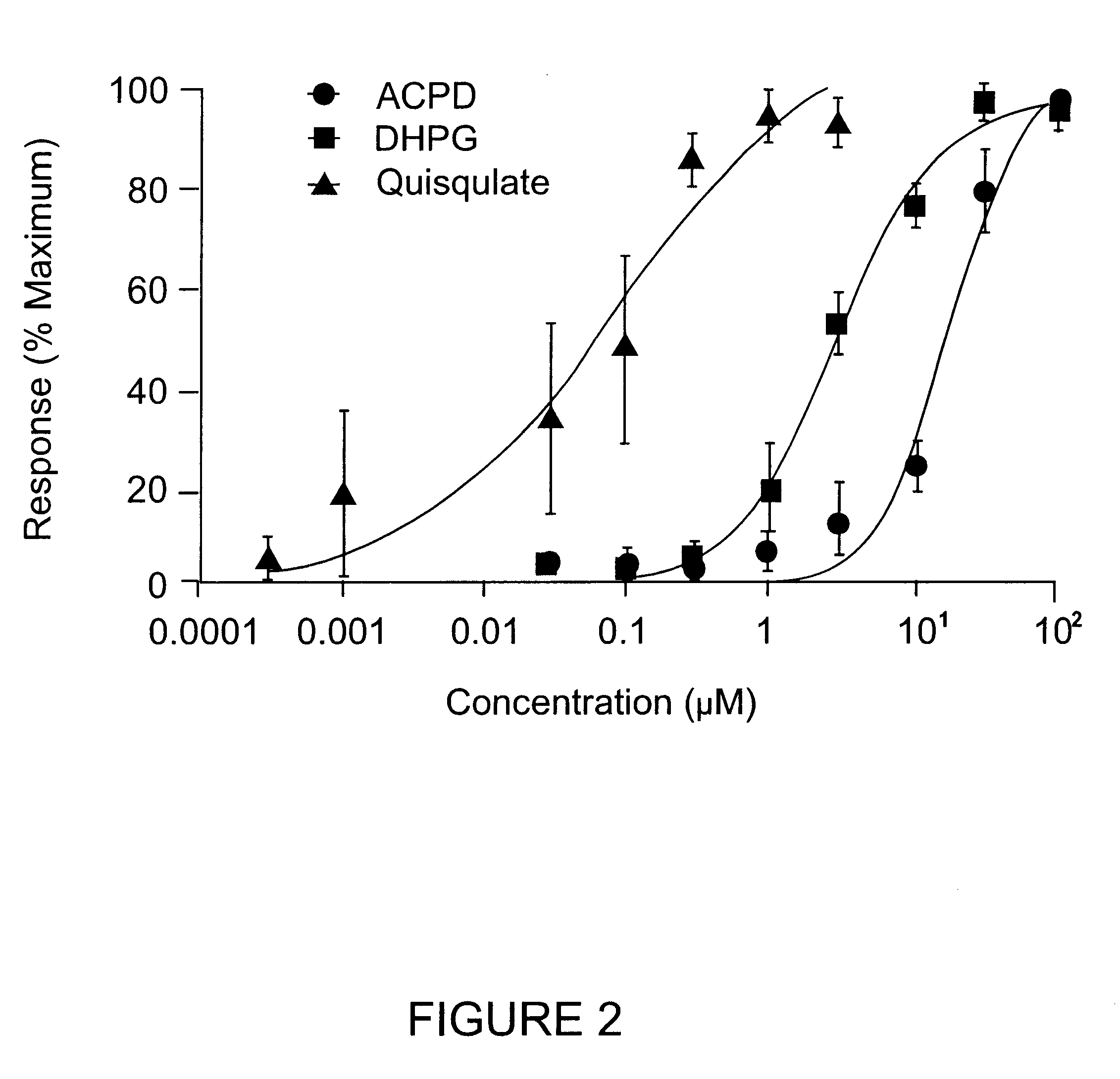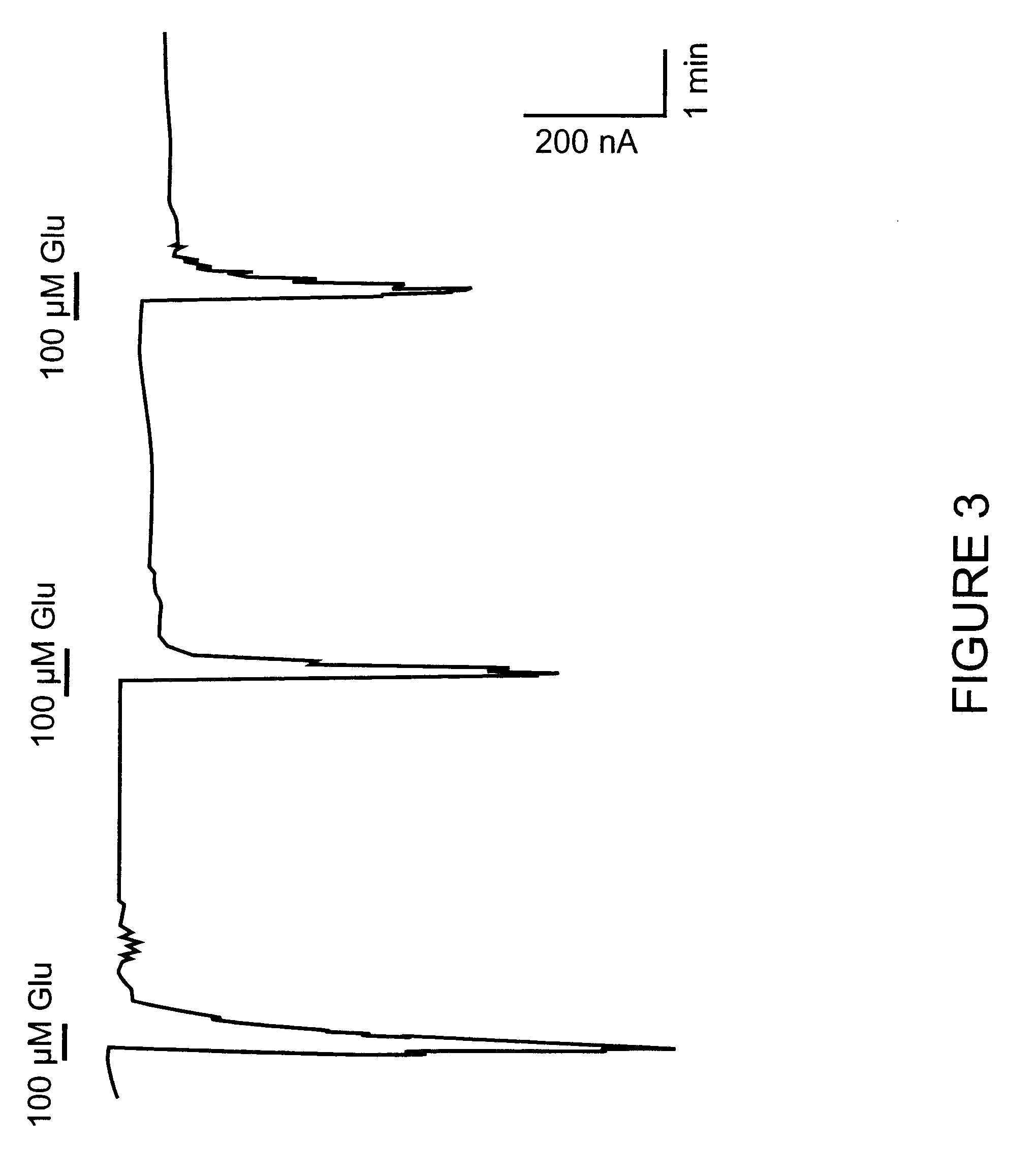Human metabotropic glutamate receptor
- Summary
- Abstract
- Description
- Claims
- Application Information
AI Technical Summary
Benefits of technology
Problems solved by technology
Method used
Image
Examples
example 1
Cloning of a Novel Human mGluR5 Splice Variant
Numbering of nucleotide positions for all the following constructs is such that nucleotide number 1 corresponds to the A of the ATG start codon of the nucleotide sequence encoding the designated protein.
The 5' portion of human mGluR5 was amplified from human hippocampus Marathon-Ready cDNA (CLONTECH Laboratories, Inc.) using PCR primers based on the human mGluR5a cDNA sequence (Genbank Accession No. D28538). The primers used were the Marathon Adaptor Primer (AP1; CLONTECH) and the gene-specific primer, hR5UP (antisense 25mer, complementary to nucleotides 2301-2325 of human mGluR5). Amplification products were subjected to agarose gel electrophoresis and those corresponding to approximately 2500 bp in size were gel isolated and subcloned into the Bluescript SK(-) plasmid (Stratagene) following digestion of both plasmid and PCR product with NotI and EcoRV restriction endonucleases. DNA sequence analysis of the subclones via double-stranded...
example 2
Construction of a Chimeric Receptor Between the Human Calcium Receptor and the Human mGluR5d Splice Variant
This chimera contains the extracellular domain of the human calcium receptor ("CaR") (Garrett et al. (1995), J. Biol. Chem. 270:12919) and transmembrane domain and intracellular cytoplasmic tail of the human mGluR5d splice variant. The chimeric junction between the CaR and hmGluR5d was created using a recombinant PCR strategy.
The first reaction used two primers, CA1156 (sense 19-mer, corresponding to nucleotides 1156-1174 of human CaR), and the hybrid primer CA / 5 (antisense 42-mer, containing 21 nucleotides complementary to nucleotides 1774-1794 of human CaR and 21 nucleotides complementary to nucleotides 1696-1716 of the human mGluR5d). These primers were used to amplify a 659 bp PCR fragment of human CaR from the plasmid phCaR in Bluescript SK(-).
In a separate PCR reaction using phmGluR5d(SK-) as template, an 800 bp fragment of the human mGluR5d was amplified using a hybrid p...
example 3
Functional Activation of the Novel Metabotropic Glutamate Receptor 5 Splice Variant Expressed in Xenopus Oocytes
This example describes the activation of the novel hmGluR5d splice variant using a Xenopus oocyte expression assay. PhmGluR5d(Hyg+) DNA was linearized by restriction enzyme digestion, and capped sense-strand cRNA was synthesized by T7 RNA polymerase transcription (Ambion Message Machine Kit). In vitro-transcribed RNA was concentrated by ethanol precipitation and the size and integrity of the RNA was assessed on a denaturing agarose gel.
Oocytes suitable for injection were obtained from adult female Xenopus laevis toads using procedures described in Marcus-Sekura & Hitchcock (1987), Methods in Enzymology 152. In vitro-transcribed RNA (.about.10 ng) encoding the human mGluR5d receptor was injected into Xenopus Oocytes. Following injection, oocytes were incubated at 16.degree. C. in MBS containing 1 mM CaCl.sub.2 for 2 to 7 days prior to electrophysiological recording. Followi...
PUM
 Login to View More
Login to View More Abstract
Description
Claims
Application Information
 Login to View More
Login to View More - R&D
- Intellectual Property
- Life Sciences
- Materials
- Tech Scout
- Unparalleled Data Quality
- Higher Quality Content
- 60% Fewer Hallucinations
Browse by: Latest US Patents, China's latest patents, Technical Efficacy Thesaurus, Application Domain, Technology Topic, Popular Technical Reports.
© 2025 PatSnap. All rights reserved.Legal|Privacy policy|Modern Slavery Act Transparency Statement|Sitemap|About US| Contact US: help@patsnap.com



